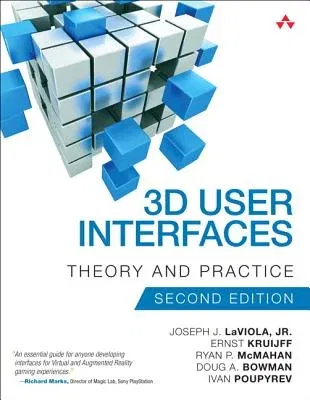From video games to mobile augmented reality, 3D interaction is
everywhere. But simply choosing to use 3D input or 3D displays isn't
enough: 3D user interfaces (3D UIs) must be carefully designed for
optimal user experience. 3D User Interfaces: Theory and Practice,
Second Edition is today's most comprehensive primary reference to
building outstanding 3D UIs. Four pioneers in 3D user interface research
and practice have extensively expanded and updated this book, making it
today's definitive source for all things related to state-of-the-art 3D
interaction.
This edition goes far beyond VR, covering the full spectrum of emerging
applications for 3D UIs, and presenting an extraordinary array of
pioneering techniques and technologies. The authors combine theoretical
foundations, analysis of devices and techniques, empirically validated
design guidelines, and much more. Throughout each chapter, they
illustrate key concepts with running case studies on gaming, mobile AR,
and robot teleoperation.
You'll find authoritative, accessible coverage of all this, and much
more:
- Essentials of HCI and human factors (for thousands of students and
practitioners now entering the field)
- How 3D UIs have evolved, and the "hard problems" that remain
- 3D UIs in console gaming, VR, augmented reality (AR), robot
teleoperation, mobile/wearable computers, and remote collaboration
- How 3D input/output enables users to perceive and act much as they do
in the physical world
- 3D output devices, including visual, auditory, haptic, and tactile
displays
- 3D input devices, including traditional, special purpose, and direct
human input via biosignals (e.g., brain input)
- 3D interaction techniques for common tasks such as selection,
manipulation, navigation, and system control
- Strategies for designing and developing 3D UIs, including the use of
2D interaction; "magic" vs. "natural" interaction techniques;
multimodal interaction, and two-handed interaction
- Evaluating existing 3D UIs, and previewing their future

